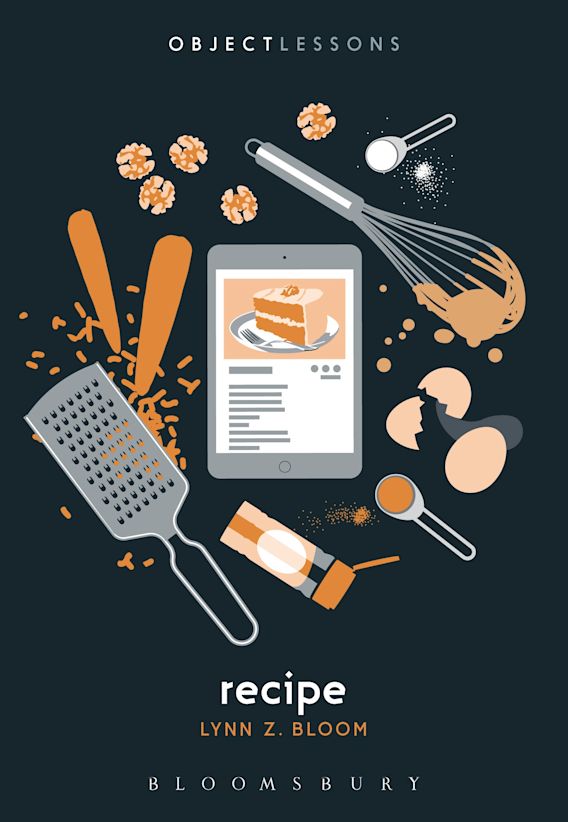Eat Your Words
Passed down through generations, written on index cards, posted to the web at the bottom of a meandering story about a blogger's family hike — a recipe is much more than a step-by-step guide to creating a delectable dish.
Lynn Z. Bloom, Board of Trustees Distinguished Professor and Aetna Chair of Writing emerita, unwraps all the symbolism in something so ostensibly simple in her latest book, "Recipe," part of the Bloomsbury Publishing "Object Lessons" series in which writers explore "the hidden lives of ordinary things."

A fan of the "top-flight" series of "short, quirky, unusual" books, Bloom challenged herself to write a proposal that would be accepted in the highly selective series. "I've always liked to cook, everybody likes to eat, everybody in my family cooks, it's fun to do," she says. "So I thought I would write a proposal based on unusual ways to look at the process of how most home cooks do what they do."
She was thrilled to learn her pitch was accepted as the pandemic and lockdowns took hold and people the world over ramped up their home cooking, spawning terms like procrastibaking. "This was the perfect thing to write where I could not think of disease, death, or disaster," says Bloom. "I wanted it to be a happy book."
Bloom taught at UConn from 1988 to 2015. She's written more than 25 books, including an in-depth biography of famed child-rearing expert Dr. Benjamin Spock, who taught her about precision: "If you don't write clearly, someone could die." This book, she says, is perhaps the most universal.
"Essays in academic journals only get read by other academics," Bloom says. "This book literally gets people where they live, gets people talking."
"Recipe" begins by taking the subject at face value, breaking down the components of a recipe as an instruction guide. "A recipe is a success story," Bloom writes. "A recipe tells the story of how any cook, however naive or sophisticated, in partnership with the recipe's words and music, can transform often disparate ingredients into a congenial — even exciting — treat."
Centered on chicken noodle soup and its countless variations, from Jewish Penicillin to The Chicken Soup of the Chinese Aunties, that chapter is the spool from which the rest of the book unwinds — even Bloom's exploration of the recipe as a how-to is multilayered, playing with the unique spin every cook puts on every dish, every time, and the way personal tweaks become favorite family recipes.
Each chapter is anchored by a representative dish to dissect deeper meanings: macaroni and cheese for comfort, the Thanksgiving meal for celebration, chocolate for cooking improvisation. (You'll find Bloom's favorite sentence in that last chapter.)
And even in what she says is the one "distressing" (but vital) chapter, on food insufficiency, recipes have a place: This section probes the numerous ways to make simple porridge. Bloom in her research found a cookbook written by prisoners in a Holocaust camp. "The recipes were a link to their heritage," she says.
"When you're looking at food, you're looking at culture, history, hospitality, community, transmission of values, nurturing, celebration. You can't do any of these without food."
Bloom leaves the reader with what she says is "the best recipe, maybe of anything" for a pie that contains so much fresh fruit she thinks it could practically be considered a health food. Bon appétit!
By JULIE (STAGIS) BARTUCCA '10 (BUS, CLAS), '19 MBA
Illustration Below By SASKIA KEULTJES
The Best Blueberry Pie
Serves 6 - 8
To eat this pie is like eating fresh berries, only better. Use the largest, plumpest berries to fill the pie shell.

Ingredients
- 4"“5 cups fresh blueberries
- 1 9-inch pie shell, baked and cooled
- 1/4 cup water
- 3/4 cup sugar
- 1â„2 teaspoon salt
- 1"“2 tablespoons cornstarch
- 2 tablespoons butter
- 1 tablespoon Grand Marnier (optional)
- 1/4 cup fresh raspberries (optional)
Directions
Distribute 2 1â„2 cups fresh blueberries evenly in cooled pie shell.
Cook water, sugar, salt over medium heat until sugar is dissolved.
Add remaining blueberries (2"“2 1â„2 cups) and stir over low heat until the mixture thickens — less than five minutes. Some of the berries will burst during this process, turning the mixture beautifully blue. Avoid cooking them to mush.
If the sauce is too runny, mix 1 tablespoon cornstarch and 1/4 cup cold water, then briskly stir in a few tablespoons of the hot mixture until blended.
Whisk this slurry into the cooking berries and continue whisking for about a minute until the mixture thickens as desired. Repeat if necessary.
Remove from heat. Add butter and Grand Marnier.
When cool but not congealed, pour the sauce over berries in the shell.
Chill until ready to serve. Decorate with fresh raspberries, if desired.

Leave a Reply